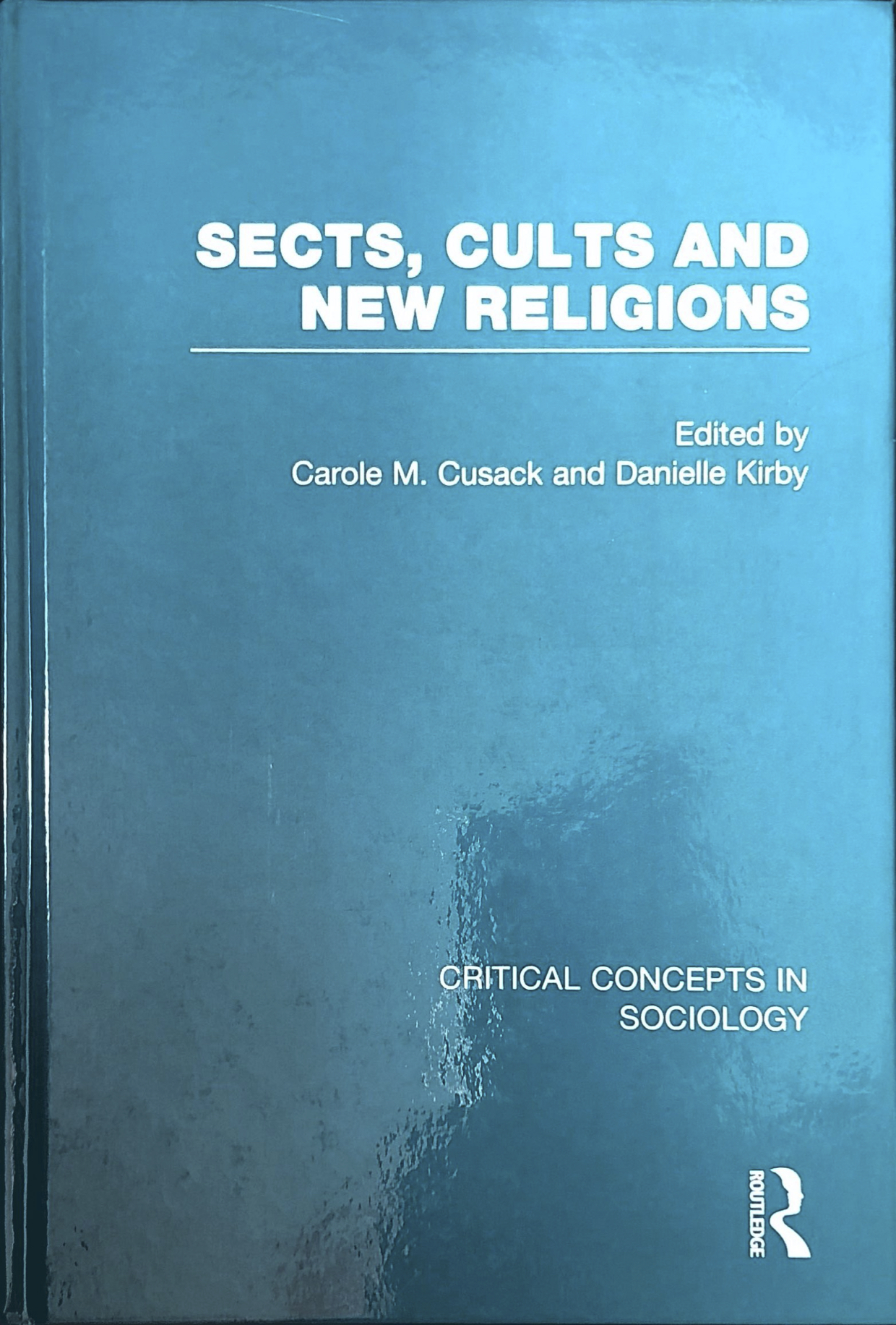Sects, Cults,
and New Religions
Cusack, C., and Kirby, D. (eds.)Sects, Cults, and New Religions. 4 volumes. New York: Routledge, 2014
Four volume series overviewing the academic study of new religions. I’m really proud of it, and I think it’s excellent. Again, insanely expensive and probably only realistically accessible through a library or if you are a friend of mine. Or Carole’s.
New Religious Movements (NRMs) came into being as a distinct subfield of academic study in the 1970s in response to the explosion of non-traditional religions that took place in the waning years of the Sixties counterculture. (The designation ‘New Religion’ is a direct translation of a Japanese term coined for the many new religions that emerged in the wake of the Second World War, and was adopted by Western scholars in the late Sixties/early Seventies in preference to the pejorative term ‘cult’.) These movements, and those termed ‘sects’ and ‘cults’, initially attracted the attention of American and European sociologists of religion because of the controversy that arose in response to their expansion.
Religious Studies, which at the time was still in the process of establishing itself as a legitimate discipline distinct from Theology and traditional Biblical Studies, was only too happy to leave NRMs to Sociology. This situation gradually changed, however, so that at present at least as many scholars of NRMs come from Religious Studies backgrounds as come from the social sciences.
